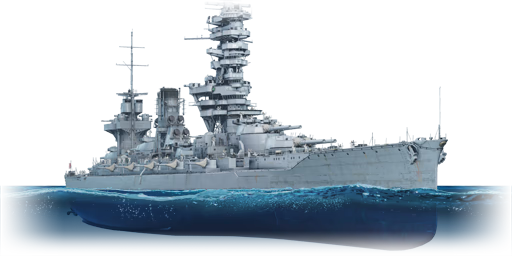The IJN Fuso (扶桑, namesake: classical name for Japan) was the first of her class and a symbol of Japan's naval power in the early 20th century. She was designed to maintain Japan's supremacy in the Pacific against the United States and Great Britain, following Japan's victory over Russia at Tsushima in 1905. Fuso had an ever growing distinction: a towering pagoda mast that housed her fire control and observation equipment that grew with nearly every modernization. However, despite undergoing several modernizations and reconstructions, Fuso could not keep up with the newer and faster battleships of Japan and other countries. She was primarily relegated to auxiliary roles during World War II, such as troop transport and training.
IJN Fuso was introduced in Update "Fire and Ice". She has six turrets with twin 356 mm cannons, which can fire a powerful broadside of twelve 356 mm shells every 30 seconds. Fuso appears in War Thunder in her 1944 modernization, which includes a large array of anti-air guns, mostly consisting of the infamous Type 96 (25 mm). These guns are inaccurate and unreliable individually, but in large numbers (Fuso has 89 in total) they create a massive barrage of lead that can deter aerial targets at close to medium range. However, the Fuso also has low mobility, with a top speed of only 23 knots and a large turning radius. Therefore, Fuso is best suited for long-range engagements where she can use her superior firepower to her advantage.















